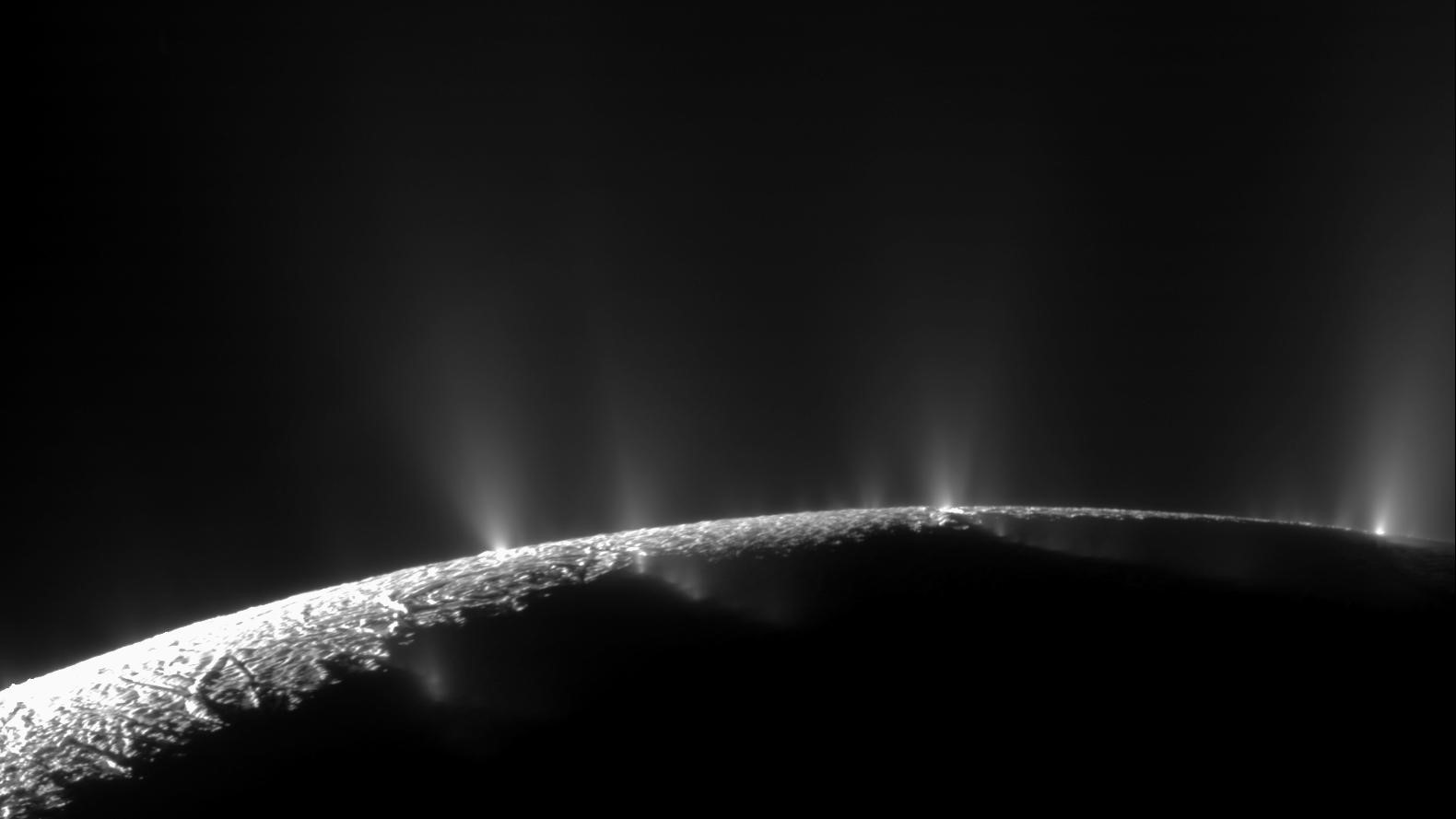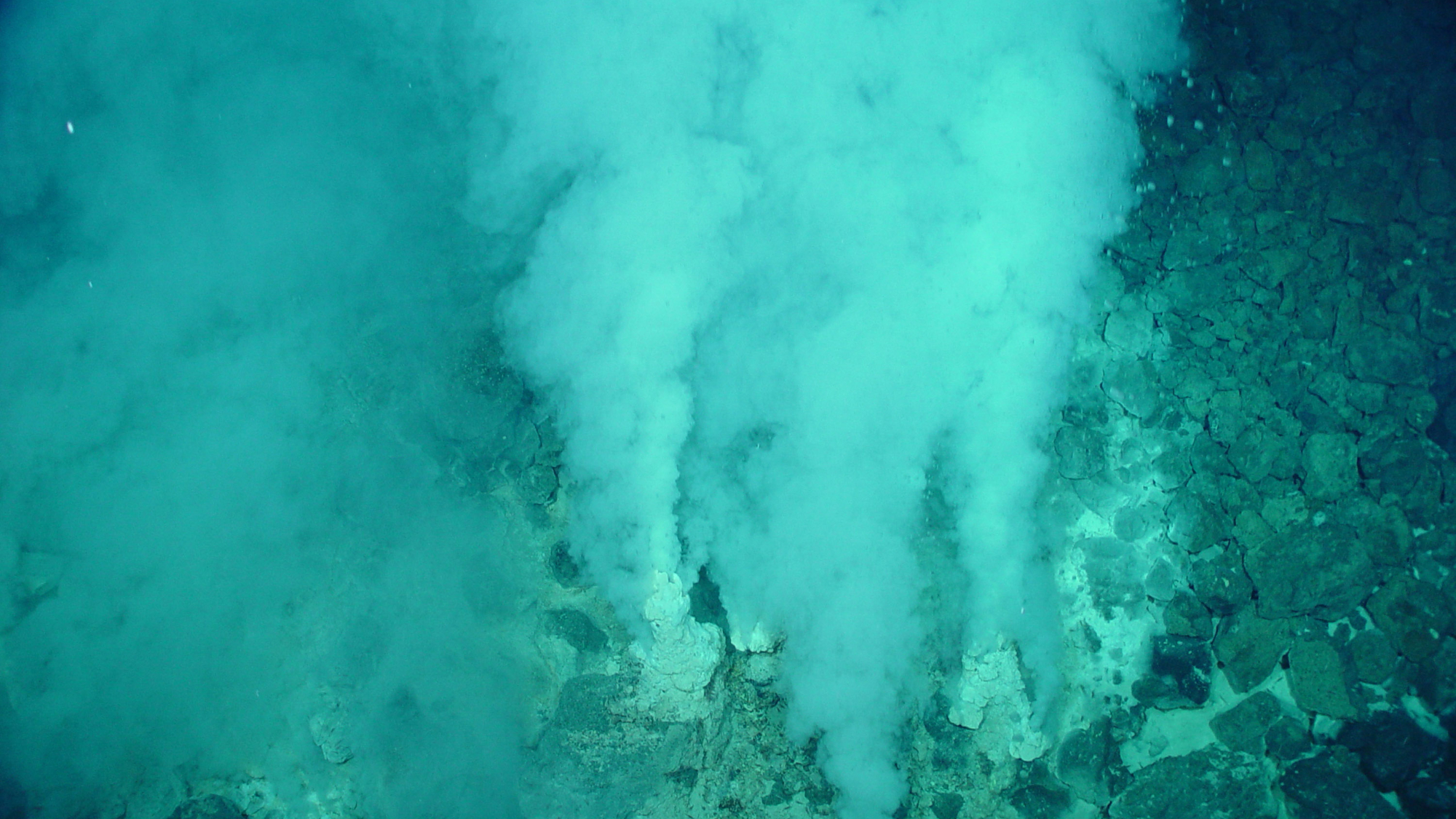Detecting life on Saturn moon Enceladus would require 100 flybys through its geyser plume, study suggests
The giant water plumes of Saturn's moon Enceladus offer a unique opportunity to seek life without landing.

Detecting life on the icy Saturn moon of Enceladus could be achieved without even landing on the moon, according to new research. But it wouldn't be easy.
A team of researchers has found that it would require more than 100 flybys through a geyser plume from Enceladus with an orbiting spacecraft to capture signs of a cell — a crucial indicator to confirm the presence of life. This finding could help in designing future space missions to Saturn and Enceladus and to optimize scientific returns, especially if life is not detected.
In 2015, NASA's Cassini spacecraft flew through geysers spewing out of the Enceladus surface. Data from numerous flybys showed that the plume contained abundant dihydrogen (H2), which hinted at the presence of hydrothermal vents on the moon’s seafloor, not unlike the ones on Earth. The data also reflected generous amounts of carbon dioxide and methane (CH4), both of which told us that methane-based life forms or methanogens could exist around hydrothermal vents on Enceladus.
Photos: Enceladus, Saturn's cold, bright moon
Now, researchers have modeled the moon's hydrothermal vent environment to estimate mass of such a methanogenic ecosystem to better understand how many cells could enter the plumes that eventually jet out of the moon’s surface.
"We were surprised to find that the hypothetical abundance of cells would only amount to the biomass of one single whale in Enceladus' global ocean," Antonin Affholder, a postdoctoral research associate at University of Arizona and the study's lead author, said in a statement.
By estimating cell densities, the team found that the moon's life-supporting region or biosphere around hydrothermal vents could be very small — less than 10 tons of carbon, which is smaller than the biosphere around Earth's hydrothermal vents.
Get the Space.com Newsletter
Breaking space news, the latest updates on rocket launches, skywatching events and more!

The definitive evidence of living cells caught on an alien world may remain elusive for generations.
Antonin Affholder, study lead author
Nevertheless, according to this new research, an adequate amount of cells and organic material from methanogens would enter the plume, increasing the chances that at least some of them would be captured by a visiting spacecraft.
"Enceladus' biosphere may be very sparse," Affholder said. "And yet our models indicate that it would be productive enough to feed the plumes with just enough organic molecules or cells to be picked up by instruments onboard a future spacecraft."
If hydrothermal vents on Enceladus' seafloor harbor methanogens, these organisms would reside close to the vents like they do on Earth. Warm water released at such vents, mixed with cells of methanogens, rises until it reaches the moon's surface, where at least 100 plumes actively blast through cracks in the icy crust.

Similar vents likely exist on Enceladus’ seafloor. On Earth, environments surrounding hydrothermal vents support the creation and growth of yeti crabs, tubeworms, and a distinct species of shrimp with light-sensitive cells (or eyes) on its back. Given the uniqueness and diversity of deep sea ecosystems around hydrothermal vents on Earth, similar vents on Enceladus are tantalizing places to search for extraterrestrial life.
Assuming that most of the methane comes from methanogens residing deep in the moon’s ocean, researchers say that sampling a cell from an orbiting spacecraft is possible — if a cell survives the journey till the surface.
Previous research indicated that 93% of the plume material falls back onto the moon’s surface, making sampling through flythroughs a time-sensitive challenge. Moreover, not every cell that enters plumes survives pressure changes as the plume travels upward and outward into space. Past experiments found that 94% of the cells are destroyed due to depressurization.
Perhaps a more worrying challenge would be the presence of non-living elements called organic abiotic amorphs. As the researchers outline in the new study, abiotic amorphs possess the same signatures as living cells, leading to a high risk of false positives.
To overcome these challenges and maximize chances of sampling a (real) cell, Affholder's team found that at least 0.1 mL of a plume must be sampled, which they say is equivalent to 100 spacecraft flythroughs.
While 100 flythroughs sounds a lot, the current plan for a NASA Flagship mission, Enceladus Orbilander, shows that such an effort is within reach. Across a year and half spent circling the moon, Orbilander might attain 1,000 flythroughs through the plume. These samples would be crucial data points to hunt for existence — or even absence — of life on the moon.
"The definitive evidence of living cells caught on an alien world may remain elusive for generations," Affholder said. "Until then, the fact that we can't rule out life's existence on Enceladus is probably the best we can do."
The research is described in a paper published Dec. 13 in The Planetary Science Journal.
Follow Sharmila Kuthunur on Twitter @Sharmilakg. Follow us on Twitter @Spacedotcom and on Facebook.
Join our Space Forums to keep talking space on the latest missions, night sky and more! And if you have a news tip, correction or comment, let us know at: community@space.com.

Sharmila Kuthunur is a Seattle-based science journalist focusing on astronomy and space exploration. Her work has also appeared in Scientific American, Astronomy and Live Science, among other publications. She has earned a master's degree in journalism from Northeastern University in Boston. Follow her on BlueSky @skuthunur.bsky.social









